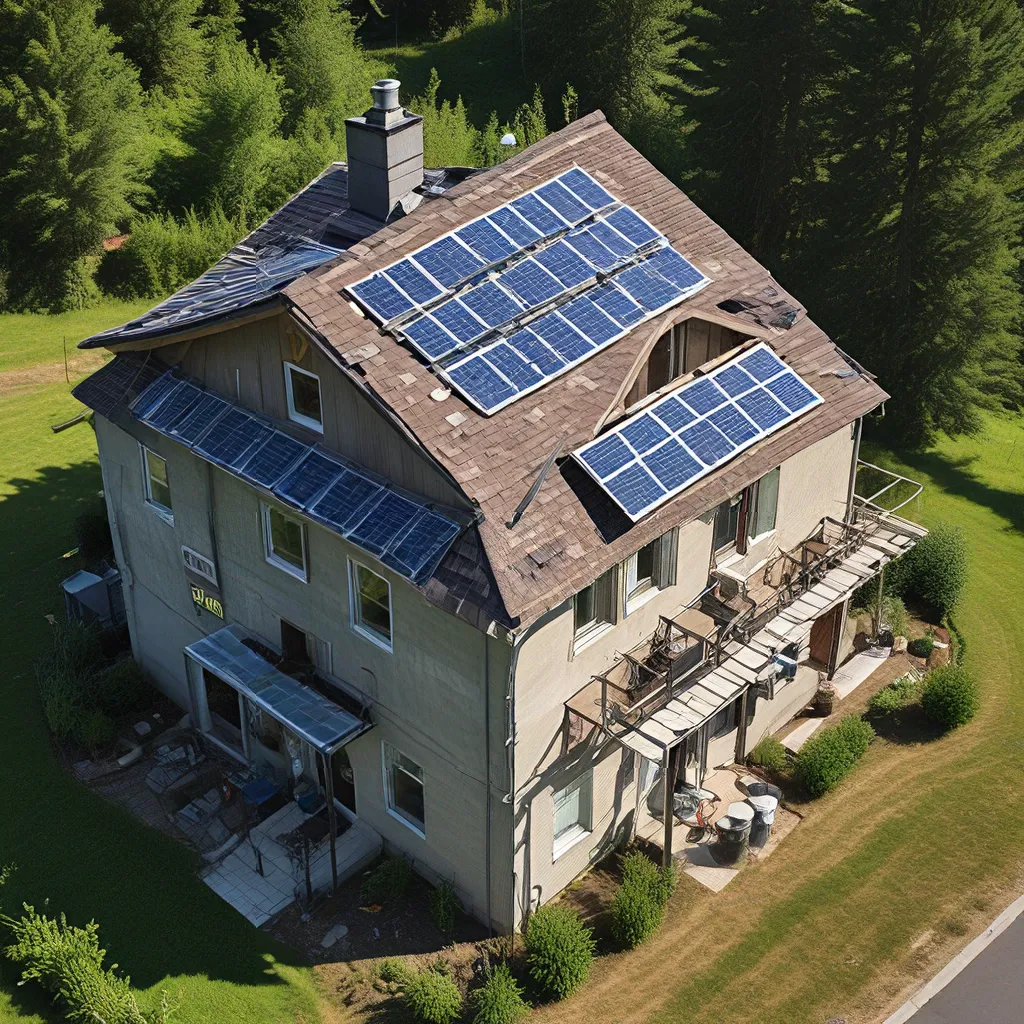
Embracing the Off-Grid Mushroom Adventure
In our pursuit of self-reliance and eco-friendly living, my partner and I have embarked on a delightfully unconventional journey – cultivating mushrooms in our very own DIY off-grid fruiting house. What started as a curiosity has blossomed into a bountiful source of nourishment, both literally and figuratively.
Let me set the stage. Our home, nestled in the permaculture haven of Melliodora, is designed with resilience in mind. Bushfire readiness is a top priority, so we’ve opted for fire-resistant materials like glass and mud brick wherever possible. When it came to growing our beloved fungi, we knew we had to get creative while staying true to our sustainability principles.
Hacking the Humidity
Mushrooms, you see, are quite the divas when it comes to their environmental needs. They thrive in a humid, shady forest-like setting – something our modern homes often struggle to replicate. Commercial mushroom growers typically rely on energy-intensive climate control systems, but that just didn’t sit right with our off-grid ethos.
So, we set out to hack the grid and build our own DIY mushroom fruiting house using salvaged materials from the local tip shop. The key? Utilizing passive climate control strategies to create the perfect growing conditions.
We started by scavenging a variety of glass panels, aluminum framing, and other repurposed items. The glass panels form the walls of our mini-mushroom oasis, trapping humidity while still allowing for crucial airflow. To maintain that all-important 90% humidity level, we turned to a trusty centrifugal humidifier.
Now, I know what you’re thinking – a humidifier? Isn’t that going to gobble up our precious off-grid energy? Fear not, my fellow energy-conscious friends. We’ve managed to keep the power consumption to a bare minimum, with the humidifier only running for 5 minutes per hour, sipping a mere 0.085 kWh per day. That’s about 1/12th the energy usage of a modern, energy-efficient fridge. Talk about hacking the grid!
Mastering Mushroom Microclimate
But the humidity control is just the beginning. Mushrooms are also quite particular when it comes to temperature and airflow. We’ve strategically placed our fruiting house on the shady, cooler side of our home, taking advantage of the thermal mass of the mud brick walls and brick pavers. This passive temperature regulation keeps our mushroom oasis comfortably cool and stable, without the need for power-hungry heating or cooling systems.
To further enhance the airflow, we’ve designed an open-bottom setup, allowing the humid air from the humidifier to cascade downwards while drawing in fresh air from the top. This natural convection current provides the mushrooms with the perfect balance of moisture and oxygen – no expensive fans required.
And let’s not forget about the lighting. Mushrooms thrive in bright, indirect light, so we’ve positioned our fruiting house to take advantage of the shaded natural daylight, without any direct sun exposure. The result? A perfectly curated microclimate that allows our fungi to flourish, all while staying true to our off-grid, sustainable principles.
Seasonal Bounty: Rotating Mushroom Varieties
But we didn’t stop there. To ensure a year-round supply of delicious, home-grown mushrooms, we’ve incorporated a seasonal rotation of different species. Each variety has its own temperature preferences, so by growing a diverse array, we can match the mushrooms to the natural fluctuations of our temperate climate.
In the cooler months, we might focus on oyster and shiitake mushrooms, reveling in their robust, earthy flavors. As the seasons shift, we’ll transition to heat-loving varieties like lions mane and king trumpets, keeping our taste buds and our pantry well-stocked.
Closing the Loop: Waste-to-Wealth
And the best part? We’re not just growing mushrooms – we’re creating a sustainable, closed-loop system. We source our growing substrates from waste materials like sawdust, straw, and spent coffee grounds, diverting these otherwise discarded resources from the landfill.
Once the mushrooms have flourished and been harvested, the spent substrates find new life as nutrient-rich soil amendments for our permaculture garden. It’s a beautiful cycle of transformation, where our food waste becomes the foundation for our future harvests.
Resilience and Abundance: The Payoff
So, what’s the payoff for all this DIY ingenuity and resourcefulness? Well, let me tell you, the rewards are bountiful. Not only do we enjoy a regular supply of delicious, nutrient-dense mushrooms, but we also find deep satisfaction in our ability to sustain ourselves, independent of the grid.
When the power goes out or the supply chains falter, we can rest easy, knowing that our little mushroom oasis will continue to thrive, providing us with a reliable source of sustenance. It’s a testament to the power of resilience, and a reminder that with a little creativity and a willingness to think outside the box, we can all hack the grid and build a more self-reliant future.
So, if you’re feeling inspired to take your energy savings and self-sufficiency to the next level, I encourage you to consider the wonders of DIY mushroom cultivation. Who knows, you might just stumble upon your own off-grid adventure, complete with a bountiful harvest and a newfound appreciation for the magic of fungi.
And don’t forget to check out Plug n Save Energy Products for all your home energy-saving needs. Together, we can create a more resilient and sustainable future, one mushroom and one energy-efficient product at a time.